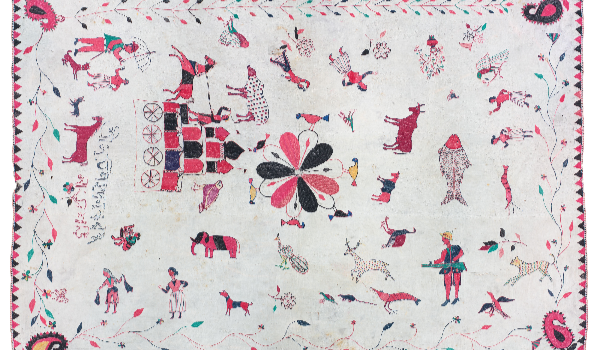
A State Of Repair

The interest in the Kantha quilts of Bengal is growing apace, after recent exhibitions at the Philadelphia Museum of Art and the Mingeikan in Tokyo, as well as a major exhibition, Kantha: Recycled and Embroidered Textiles of Bengal, at Mingei International Museum, San Diego.
Kantha refers to a cotton cover embroidered on layers of used dhotis or saris. Kanthas are of course collected for their beauty and fine stitchery, but what sets them apart is the vivacity of their designs. Kantha quilts illustrate the whole of life in rural and urban Bengal during the late 19th and early 20th centuries. Their appeal is found in the individuality and often the humour of each piece, reflecting the outlooks of Bengali housewives and mothers as they looked out in wry amusement at their society.

Most of the figurative kanthas in the Calcutta and Dacca museums and the Kramrisch collection in Philadelphia were found in the districts of Khulna, Jessore and Faridpur (where the finest kanthas were produced). Though now in Bangladesh, before the Partition of British India in 1947 these districts had strong links and means of transportation to Calcutta.
The word Kantha derives from Sanskrit and refers to rags. There is a superstition, prevalent particularly in rural Bengal, that a quilt made out of used cloth will ward off the effects of black magic. Here, kanthas are used as winter and summer quilts, covers and wraps for books and valuables, and mats for ceremonial purposes. A Kantha is often stitched as a gift for a newborn, a grown-up son, or as a wedding present for a daughter. They are often inscribed in Bengali script with dedications to the bridegroom from the bride, and sometimes with thanks to those in the village who helped with the celebration.
Extract from the Cotton issue. Words by John Gillow, photography by Don Tuttle.
